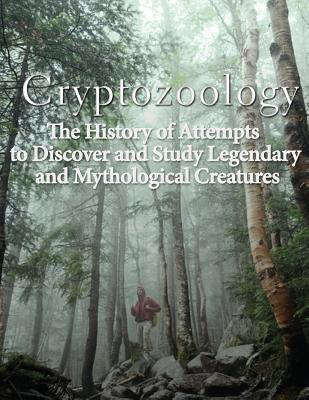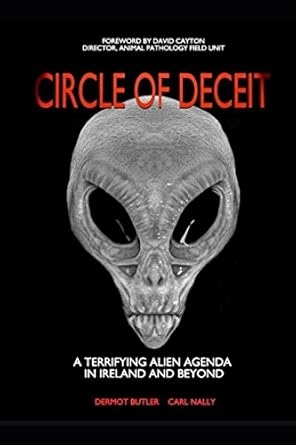The Ghosts of Lough Cullen
Ghost/Paranormal
Monday 9th, December 2024
5 minute read.
Nestled in the heart of South Kilkenny, Lough Cullen, or Holly Lake as it is also known, is a site of remarkable natural beauty and folklore. Despite its quiet and unassuming presence, the lake harbours a wealth of myths, historical connections, and environmental lessons. Its tranquil setting belies the rich and sometimes dark tales associated with it, making it an intriguing destination for those drawn to Ireland’s storied past.
Lough Cullen’s reputation is steeped in myth. One of the most enduring stories is of ghostly hurlers who appear under the full moon. According to the Journal of The Royal Society of Antiquaries of Ireland, these spectral players engage in intense matches atop the shimmering waters. Their game ends with haunting cries that echo around the surrounding hills, causing the lake to churn violently. The eerie spectacle concludes with the appearance of a witch, disguised as an old woman, who unleashes “venomous wails of destruction” and shouts “An luachair, an luachair” (the rushes, the rushes).
This tale ties to the legend of the lake’s creation. Irish scholar John O’Donovan documented how a wicked witch, intent on destroying a group of young men hurling on the plain where the lake now lies, used cunning to fulfil her plan. One of the hurlers, seeking water, was directed by the disguised witch to pull up a rush from a nearby tuft. When he did so, water burst forth, flooding the plain and drowning all the young men.
A similar story was collected as part of the National Folklore Collection. Laurence Roche, a local man, recounted a version in which a thirsty traveller encountered a woman carrying a pail of water. She instructed him to pull up a rush for a drink, cautioning him to replace it. The man failed to do so, causing water to surge and form the lake. Locals claim the lake has no bottom, and its English name, Holly Lake, comes from a time when its surface froze, allowing people to skate and play games using holly burls.
The legendary Irish warrior Fionn Mac Cumhaill also features in Lough Cullen’s rich lore. According to O’Donovan, Fionn was staying near the lake when he saw a hare with a coat of gold on one side and silver on the other. He and his faithful dog Bran gave chase for days, only to find the hare had transformed into a beautiful woman by the water’s edge. She was distraught, having lost her golden ring in the lake. Fionn retrieved the ring, but the woman cursed him, transforming him into a frail old man.
The Fianna eventually discovered the witch behind the curse, residing on Tory Hill. They began digging up the hill, intending to throw it into the lake. The witch, whose name was Grinn, pleaded with them to stop and restored Fionn to his former self. She declared the hill her "habitation and the lake my power". Fionn responded, saying, “We shall always know you by Cuillinn Grinn, and this hill will be known as Sliabh Cuillinn to the end of time”.
The area around Lough Cullen has historical significance, particularly through the Burke or Gaul family, descendants of William de Burgh. The family settled in Kilmacow after 1370 and built a castle overlooking the lake. Although the castle is now in ruins, locals maintain that remnants can still be seen in a field between Gaulstown and Charlestown, near the stream that flows from Lough Cullen.
While its myths remain vivid, Lough Cullen has not escaped the impacts of modernity. John Fitzgerald, a lifelong resident of the area, recalls his childhood exploring the lake, its shores, and the surrounding boglands. Swimming at a spot called “Dan’s Hole” was a cherished pastime, but these days, such activities are no longer common. The lake was once home to trout and pike, but these species have vanished entirely.
Fitzgerald, an environmentalist, attributes the decline to intensive farming practices introduced after Ireland joined the European Economic Community (now the European Union) in 1973. He also laments the disappearance of wild iris flowers, once abundant along the lake’s edges, which have been lost as the lake’s size and quality have deteriorated.
Located near the tip of Kilmacow parish, Lough Cullen is easily accessible. From Mullinavat, travellers can take the R448 and follow the Fahee road from Kilmacow to reach the lake. It is closely associated with the nearby areas of Big Wood, Mullinavat, Gracedieu, Kells, and Kilmacow.
Despite its environmental challenges, Lough Cullen remains a place of tranquil beauty and deep cultural significance. Its legends of witches, hurlers, and ancient warriors continue to resonate, ensuring the lake holds a special place in the hearts of locals and those who visit its shores. For anyone exploring Kilkenny, a trip to Lough Cullen offers a glimpse into Ireland’s mystical past intertwined with its natural heritage.
Lough Cullen’s reputation is steeped in myth. One of the most enduring stories is of ghostly hurlers who appear under the full moon. According to the Journal of The Royal Society of Antiquaries of Ireland, these spectral players engage in intense matches atop the shimmering waters. Their game ends with haunting cries that echo around the surrounding hills, causing the lake to churn violently. The eerie spectacle concludes with the appearance of a witch, disguised as an old woman, who unleashes “venomous wails of destruction” and shouts “An luachair, an luachair” (the rushes, the rushes).
This tale ties to the legend of the lake’s creation. Irish scholar John O’Donovan documented how a wicked witch, intent on destroying a group of young men hurling on the plain where the lake now lies, used cunning to fulfil her plan. One of the hurlers, seeking water, was directed by the disguised witch to pull up a rush from a nearby tuft. When he did so, water burst forth, flooding the plain and drowning all the young men.
A similar story was collected as part of the National Folklore Collection. Laurence Roche, a local man, recounted a version in which a thirsty traveller encountered a woman carrying a pail of water. She instructed him to pull up a rush for a drink, cautioning him to replace it. The man failed to do so, causing water to surge and form the lake. Locals claim the lake has no bottom, and its English name, Holly Lake, comes from a time when its surface froze, allowing people to skate and play games using holly burls.
The legendary Irish warrior Fionn Mac Cumhaill also features in Lough Cullen’s rich lore. According to O’Donovan, Fionn was staying near the lake when he saw a hare with a coat of gold on one side and silver on the other. He and his faithful dog Bran gave chase for days, only to find the hare had transformed into a beautiful woman by the water’s edge. She was distraught, having lost her golden ring in the lake. Fionn retrieved the ring, but the woman cursed him, transforming him into a frail old man.
The Fianna eventually discovered the witch behind the curse, residing on Tory Hill. They began digging up the hill, intending to throw it into the lake. The witch, whose name was Grinn, pleaded with them to stop and restored Fionn to his former self. She declared the hill her "habitation and the lake my power". Fionn responded, saying, “We shall always know you by Cuillinn Grinn, and this hill will be known as Sliabh Cuillinn to the end of time”.
The area around Lough Cullen has historical significance, particularly through the Burke or Gaul family, descendants of William de Burgh. The family settled in Kilmacow after 1370 and built a castle overlooking the lake. Although the castle is now in ruins, locals maintain that remnants can still be seen in a field between Gaulstown and Charlestown, near the stream that flows from Lough Cullen.
While its myths remain vivid, Lough Cullen has not escaped the impacts of modernity. John Fitzgerald, a lifelong resident of the area, recalls his childhood exploring the lake, its shores, and the surrounding boglands. Swimming at a spot called “Dan’s Hole” was a cherished pastime, but these days, such activities are no longer common. The lake was once home to trout and pike, but these species have vanished entirely.
Fitzgerald, an environmentalist, attributes the decline to intensive farming practices introduced after Ireland joined the European Economic Community (now the European Union) in 1973. He also laments the disappearance of wild iris flowers, once abundant along the lake’s edges, which have been lost as the lake’s size and quality have deteriorated.
Located near the tip of Kilmacow parish, Lough Cullen is easily accessible. From Mullinavat, travellers can take the R448 and follow the Fahee road from Kilmacow to reach the lake. It is closely associated with the nearby areas of Big Wood, Mullinavat, Gracedieu, Kells, and Kilmacow.
Despite its environmental challenges, Lough Cullen remains a place of tranquil beauty and deep cultural significance. Its legends of witches, hurlers, and ancient warriors continue to resonate, ensuring the lake holds a special place in the hearts of locals and those who visit its shores. For anyone exploring Kilkenny, a trip to Lough Cullen offers a glimpse into Ireland’s mystical past intertwined with its natural heritage.



